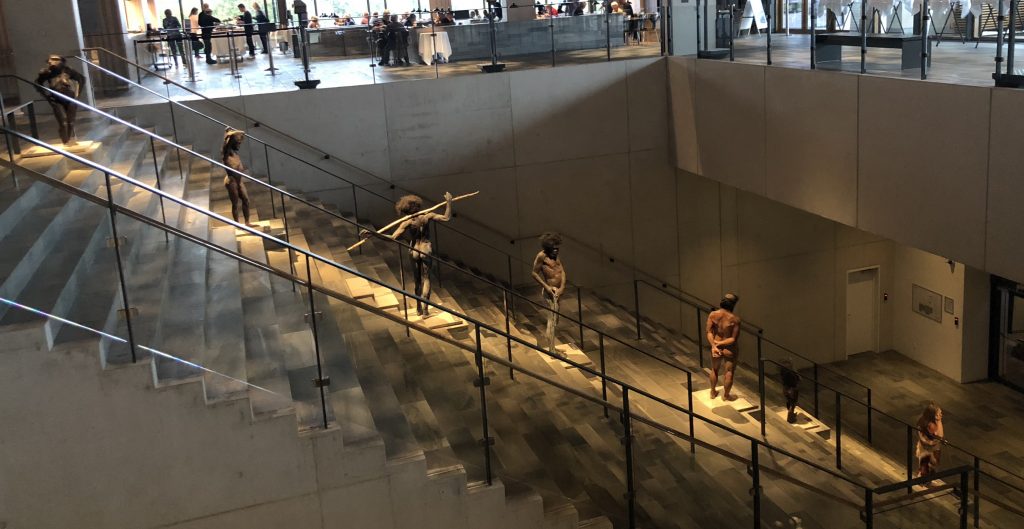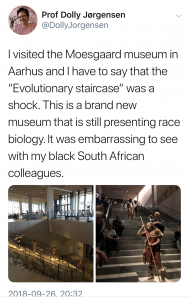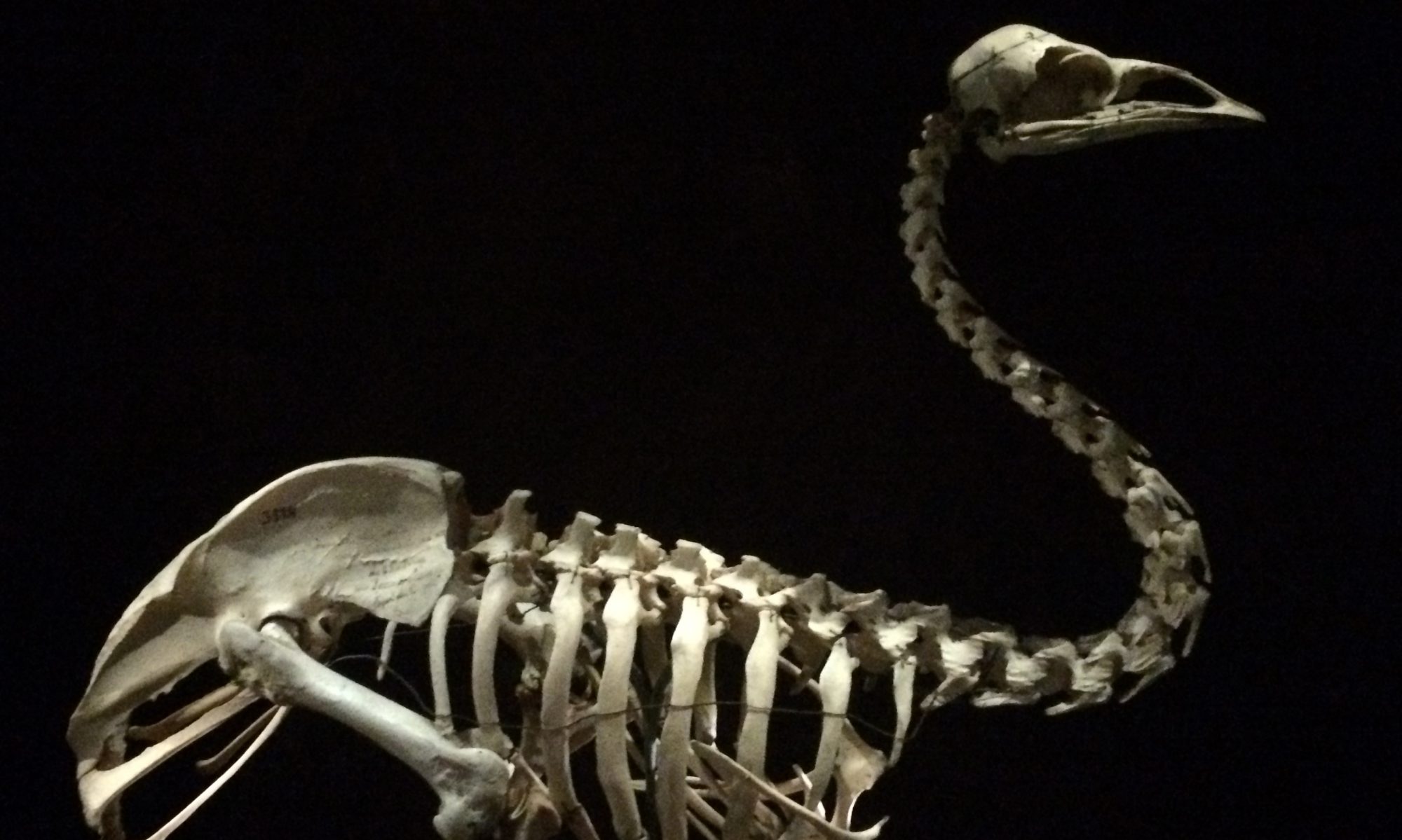The Remembering Extinction project is concerned with the ways we narrate extinction histories and extinction future avoidance, particularly in museum settings. Because of that interest, I always pay attention to how narratives in museums are constructed.
When I visited the Moesgaard museum in Aarhus, Denmark, this week, the presented narrative of evolution in the Evolutionary Staircase struck me as particularly problematic. The staircase presents the change over time in humanoid species as an entry point to its archeological exhibits. In so doing, it is also dealing with the extinction of some ancestral species to modern humans (Homo sapiens).

I tweeted about this display and its racial overtones.

Because of my tweet, I received an invitation from the Moesgaard museum to further explain my concerns in a longer format. I share with you here the letter I wrote and sent to the Head of Exhibitions at the museum:
Dear Head of Exhibitions,
I was invited via a twitter exchange with the Moesgaard museum to explain my concerns about the exhibit in your central staircase (you can see my original tweet here). I visited the museum on Wednesday, 26 September, with four South African academic colleagues (three of African descent and one of settler descent). They were visibly aghast at the exhibit, as was I. This is why I, as an academic who analyses museum exhibition narratives, tweeted about the shocking presentation.
Let me start by saying that I understand that the individual models which have been displayed are based on accepted scientific findings – that is not my concern. What is concerning is that the display of those scientific findings has created a narrative that very clearly reinforces racial biology.
As I hope you are aware, the Scandinavian countries along with the rest of Europe have a long history of participation in biological sciences which attempted to explain “scientifically” why non-white peoples were inferior to white people. That argument rests on an idea that white skinned populations are more “civilised” than others and looks for morphological (as well as cultural) differences to explain why this is so. This is not an “old” argument — a 2018 study in Sweden showed that racial experiments on Sami continued into the 1950s.
With that in mind, look at the exhibit at Moesgaard. It very clearly shows dark skinned humanoids beginning with Lucy in Ethiopia getting lighter and lighter to the bottom where full-fledged homo sapiens is represented by a white Koelbjerg Man from Denmark. While these are individually true archaeological findings, the museum has created a spatial and temporal narrative through the display which has been labelled “Evolution”. This version of Evolution shows a movement from black to white. The museum has chosen specific findings to display out of a myriad of possibilities, and the choices have been constructed in a way which sits well with the arguments long espoused by racial biology. As a scholar working on the construction of narratives in museum displays, this is striking.
This narrative with light-skinned as the end point of evolution is not the only one which could have been constructed. Instead of ending on the Koelbjerg Man, the museum could have instead shown concurrently a variety of human finds from the Stone Age across the world – which would have clearly shown diversity in skin tones. It is not as if the museum is showing all Denmark specimens – you start with Lucy from Ethiopia and move through global finds before then. So why limit the conclusion of evolution to a find from Denmark? By making this choice, the museum is clearly aligning itself with a narrative of evolution that puts lighter skin higher on the evolutionary ladder.
Museums are never neutral. The way we display our science in museums tells a story to the visitor. And whether it was intentional or not, the story told in this particular exhibit is that human evolution progresses from dark to light. This is a dangerous narrative to reinforce.
Kindest regards,
Dolly Jørgensen
Professor of History
